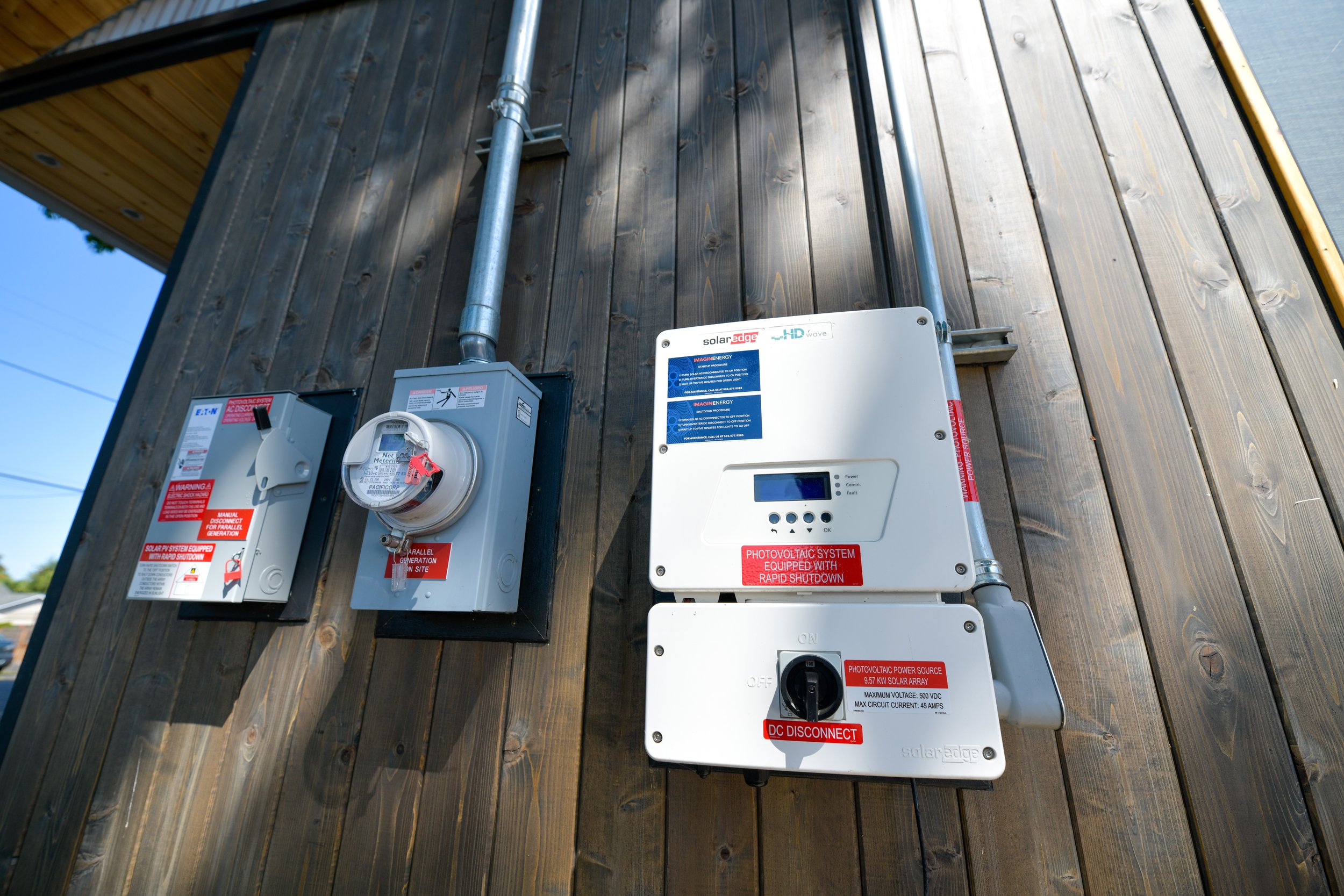Building Decarbonization
Using less energy to power our buildings continues to offer many of the most affordable ways to achieve cost savings and carbon reductions. In fact, energy efficiency is the cornerstone of a clean building. By ensuring energy efficiency savings, each of the next three foundations also becomes easier to meet.
Even efficient buildings need energy. But that energy can and should come from renewables like solar and wind that do not emit Greenhouse Gases. Renewable energy can be provided by utilities, community solar, or on-site sources. On-site generation of renewable energy (e.g. rooftop solar) can also help reduce energy bills and improve resilience.
On-site combustion of fossil gas contributes to local pollution, GHG emissions, and indoor air quality issues. Building electrification aims to eliminate most, if not all, on-site combustion of fossil fuels by replacing traditional fossil gas applications (e.g. gas furnaces) in buildings with electric options (e.g. heat pumps). Significant cost savings can also accrue to new buildings that choose not to install gas infrastructure.
Buildings need more or less power depending on the time and day. At the same time, renewable power generation can also be variable (e.g. less solar at night). Building design and operational improvements as well as things like batteries and grid-integrated water heaters, can help align energy use with carbon free electricity sources while not overwhelming the grid.
Greenhouse gas emissions result from the mining, harvesting, processing, manufacturing, transportation, and installation of building materials. These embodied carbon emissions from the building sector produce 11% of annual global GHG emissions. Using more sustainable building materials and sourcing them from closer to where the building is constructed can help reduce the building sector’s contribution to the climate crisis.

